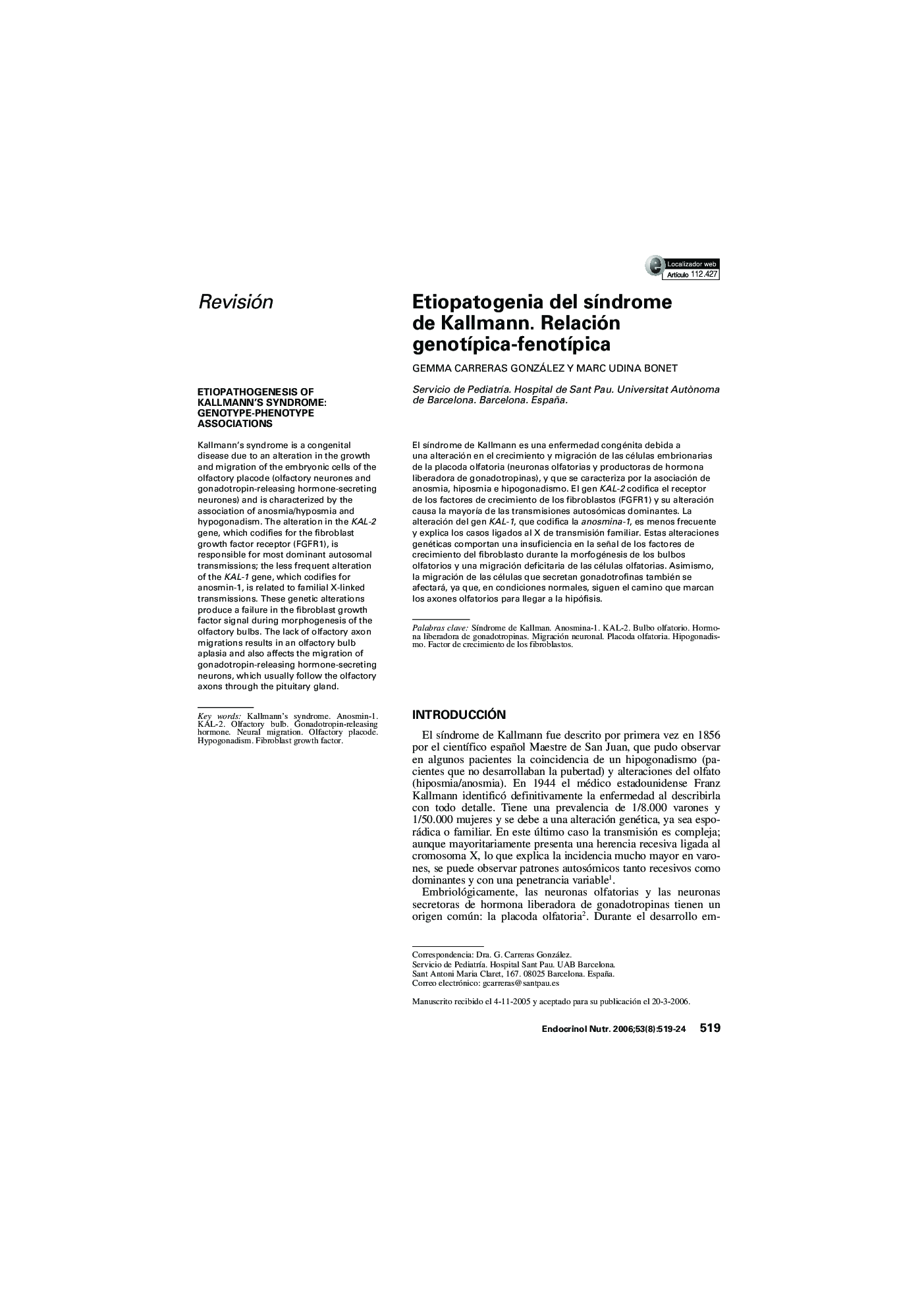| Article ID | Journal | Published Year | Pages | File Type |
|---|---|---|---|---|
| 2774564 | Endocrinología y Nutrición | 2006 | 6 Pages |
Abstract
Kallmann's syndrome is a congenital disease due to an alteration in the growth and migration of the embryonic cells of the olfactory placode (olfactory neurones and gonadotropin-releasing hormone-secreting neurones) and is characterized by the association of anosmia/hyposmia and hypogonadism. The alteration in the KAL-2 gene, which codifies for the fibroblast growth factor receptor (FGFR1), is responsible for most dominant autosomal transmissions; the less frequent alteration of the KAL-1 gene, which codifies for anosmin-1, is related to familial X-linked transmissions. These genetic alterations produce a failure in the fibroblast growth factor signal during morphogenesis of the olfactory bulbs. The lack of olfactory axon migrations results in an olfactory bulb aplasia and also affects the migration of gonadotropin-releasing hormone-secreting neurons, which usually follow the olfactory axons through the pituitary gland.
Keywords
Related Topics
Life Sciences
Biochemistry, Genetics and Molecular Biology
Clinical Biochemistry
Authors
Gemma Carreras González, Marc Udina Bonet,
